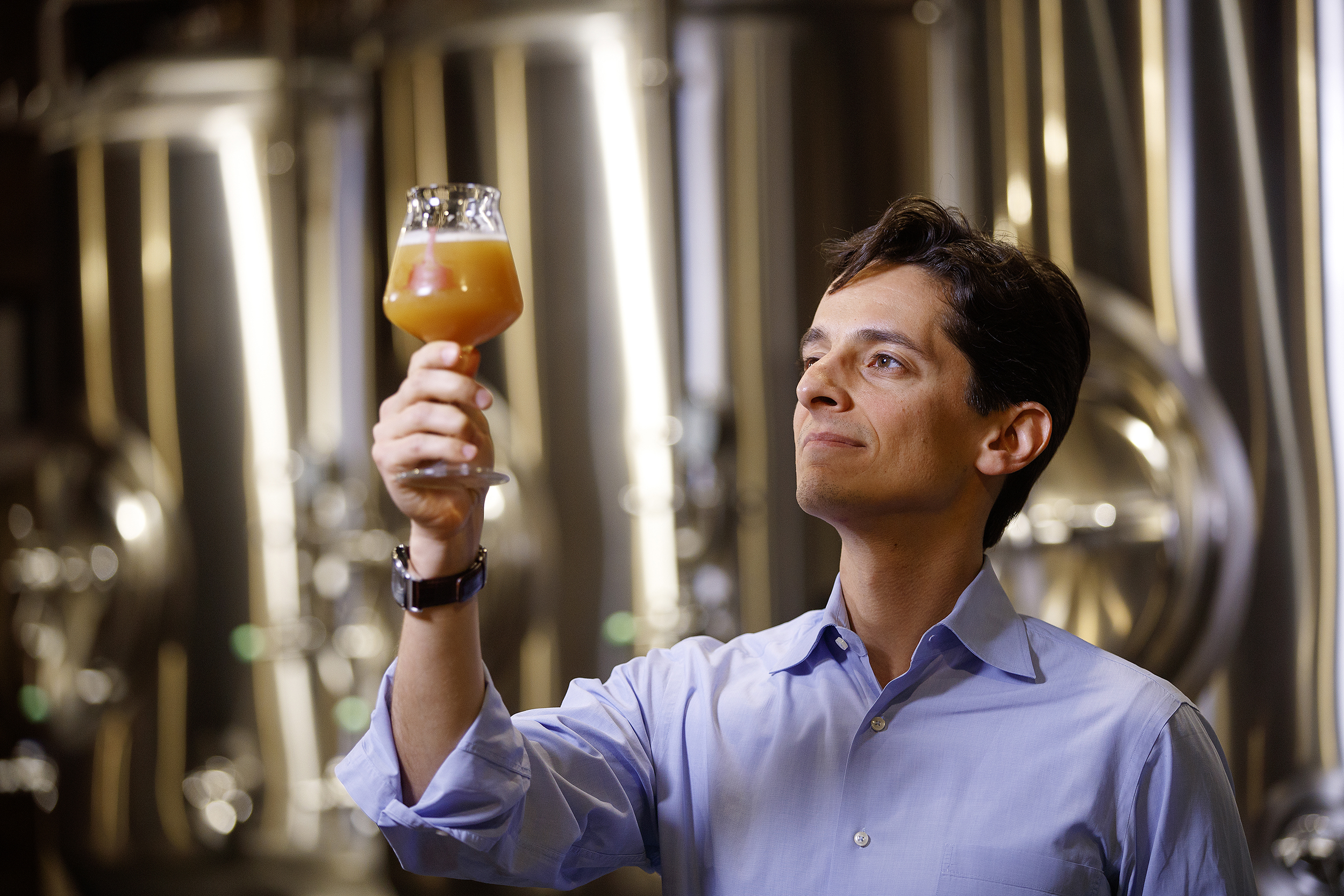
While conventional wisdom says business success requires cutthroat competition, craft breweries in Nebraska often work together to develop new beers, hold festivals and joint events, even persuade the Legislature to change unfavorable liquor regulations.
It’s no accident.
A recent study by Andre F. Maciel, assistant professor of marketing at the University of Nebraska–Lincoln, examined the craft brewing industry to understand how “collaborative market driving” can be an essential strategy for gaining customers and growing markets.
To better understand this phenomenon, he studied how collaboration played a significant role in elevating craft breweries in the multi-billion-dollar beer industry. Dating back to the 1970s, craft brewing entrepreneurs collaborated on developing consumer tastes, creating trade associations, building their reputations and lobbying for political change.
As a result, by 2016, there were more than 5,000 craft breweries accounting for about 20% of the U.S. beer market.
It’s a lesson that could be used in other industries, Maciel said.
“Instead of trying to take people out of the market, they actually open the market to potential peers,” Maciel said.
Peer collaboration has long been part of Nebraska’s craft brewing industry, according to Nebraska Craft Brewers Guild Executive Director Brianne Schuler.
“Our breweries like to work together,” she said. “You’ll see a lot of them doing collaboration beers, supporting causes jointly, participating in events jointly, so we really do believe that the industry is stronger when we’re all working together.”
Cody Schmick, co-owner of Kinkaider Brewing, said that many of Kinkaider’s customers most likely started with another craft brewery. The craft beer industry is different from other industries where cutthroat competition is the only way to grow sales, he said.
“In the craft beer world, you know, we’re just a percentage of overall beer sales,” he said. “A rising tide lifts all boats.”
For example, if a Busch Light drinker is exposed to craft beer from someone at a different brewery and likes it, they may try Kinkaider next.
A number of craft breweries have collaborated with each other, potentially increasing sales.
“Each of those breweries is somebody’s favorite brewery,” Schmick said. “If you do a collaboration, you’re going to bridge that gap to where, ‘hey, this guy only goes to Cosmic Eye’ but if we would do a collaboration with them… he’s gonna start checking out more beers.”
In 2019, 15 female representatives from Nebraska breweries collaborated on a Pink Boots IPA, with $1 from each pint was donated to Pink Boots Society Nebraska, an association for women beer professionals.
In another example, the Nebraska Strong Red Ale was brewed by 26 breweries across Nebraska in 2019 to benefit flood relief. The initiative was started by Brian Hoesing of 5168 Brewing, according to a news release.
Some breweries, like Kinkaider, have collaborated outside the craft beer industry. For example, their popular summer release the Grapefruit Radler came from a collaboration with Pink Gorilla Events.
“We probably would have never done [the Grapefruit Radler] if we didn’t collaborate with those guys that first year,” Schmick said.
Outside of beer collaboration, breweries also share resources such as aluminum cans and bags of malt, according to Schuler.
“We have an internal message board where folks will share resources if somebody needs…,” she said. “There’s definitely a lot of goodwill.”
To gather data for his study, Maciel conducted 45 in-depth interviews with craft brewers and consumers, spent three years observing an 80-member craft beer and home brewing club, toured 10 breweries and attended four craft beer festivals in three states. He noted other instances where relatively small producers and allied consumers have collectively driven markets to a high degree, such as organic foods and grass-fed meat, food trucks, credit unions and even the early days of personal computers and nouvelle cuisine.
The study, co-authored by Eileen Fischer of York University in Toronto, was published in the American Marketing Association’s Journal of Marketing.








